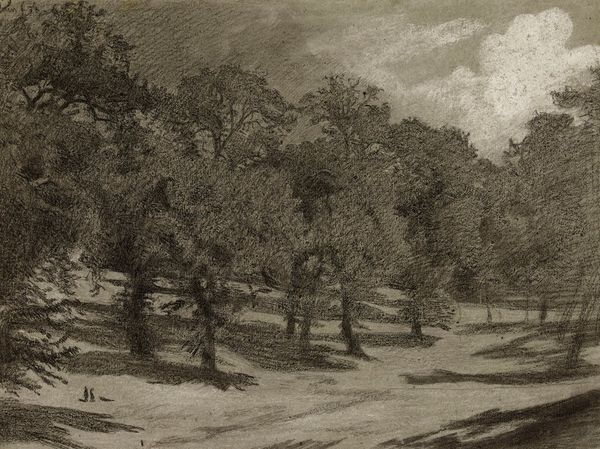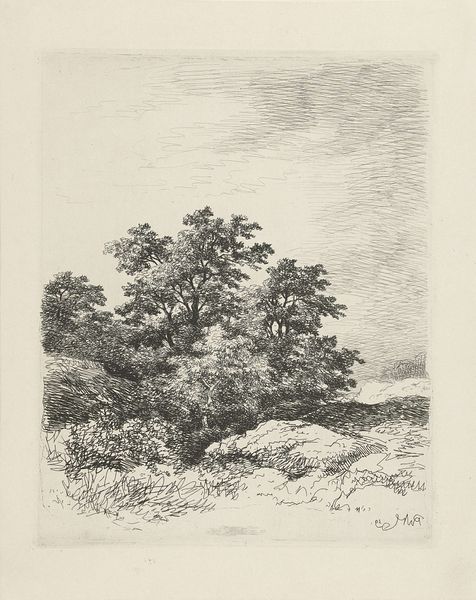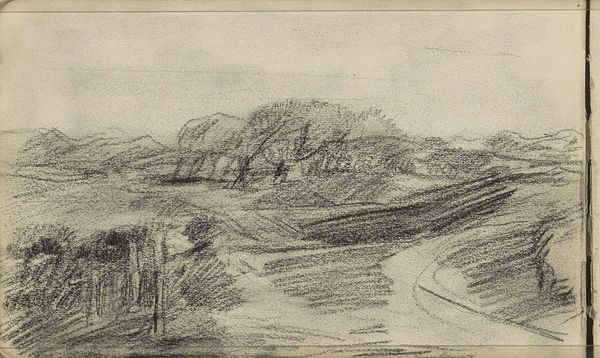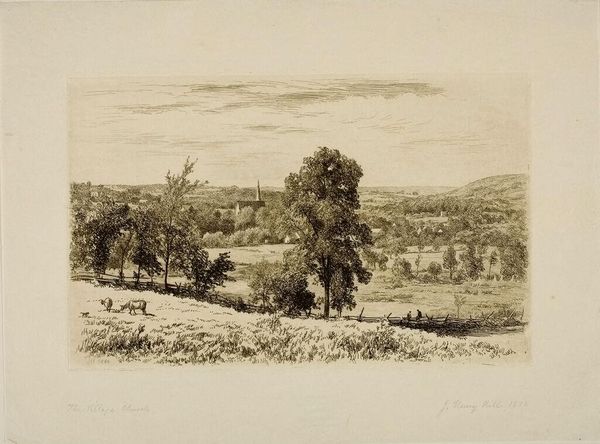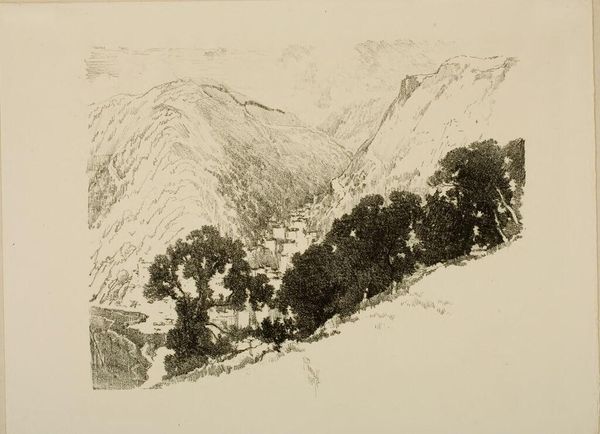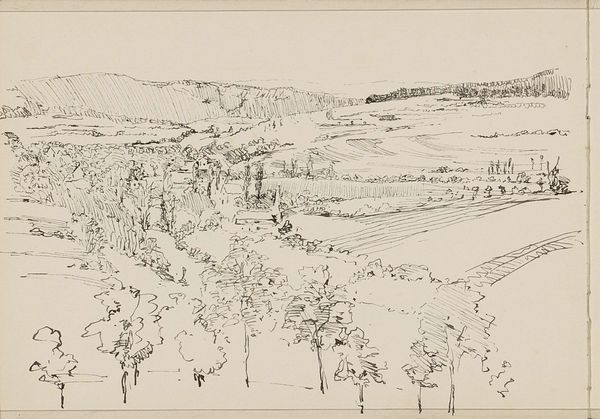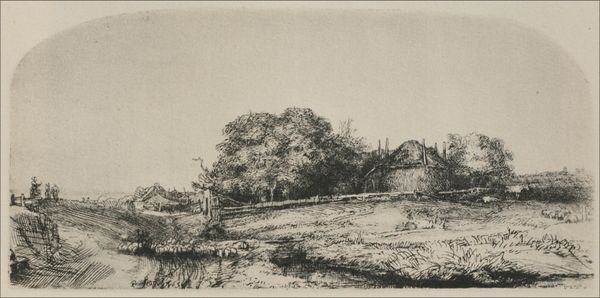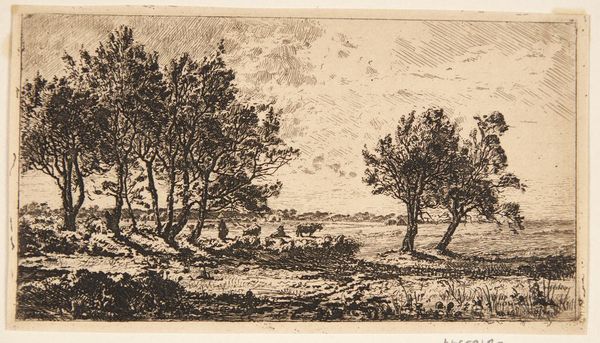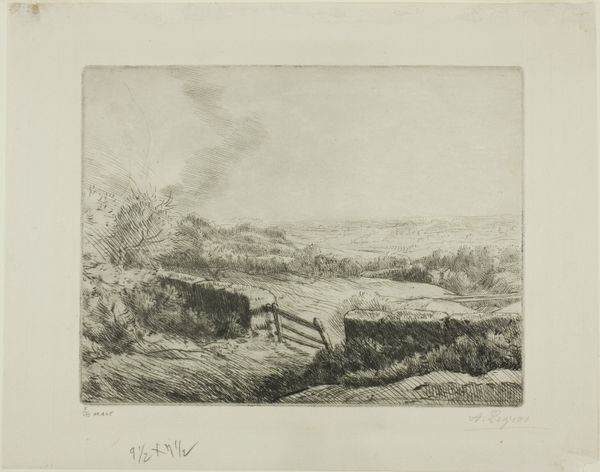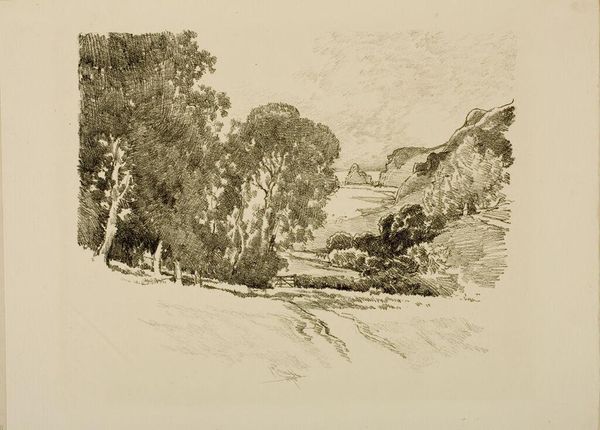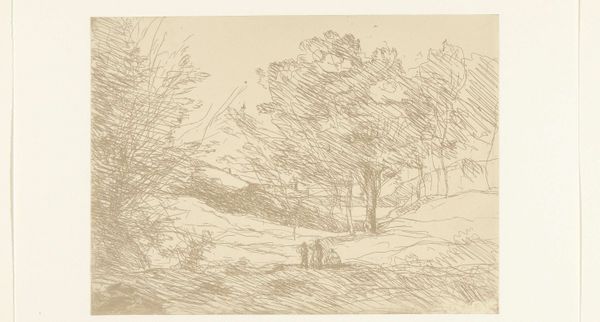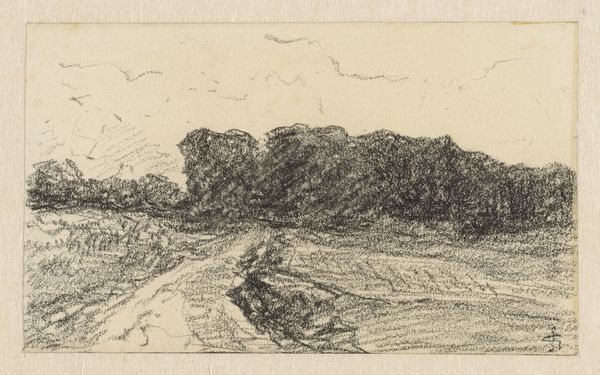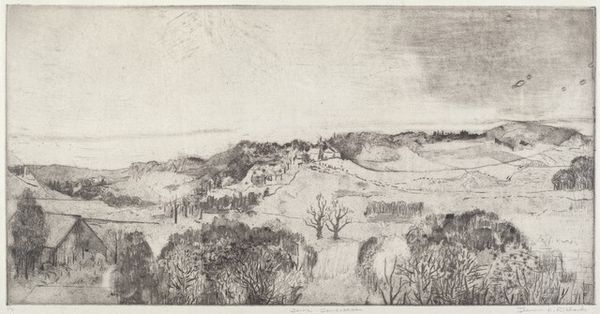
Dimensions: 9 15/16 x 12 7/16 in. (25.24 x 31.59 cm) (sight)22 1/2 x 26 1/2 in. (57.15 x 67.31 cm) (outer frame)
Copyright: No Copyright - United States
Editor: So here we have Pierre Bonnard’s "Landscape in the South of France," a lithograph from 1925. It’s interesting to see such an impressionistic landscape done as an ink drawing rather than paint; it feels much more intimate because of that. What catches your eye in terms of Bonnard's choices here? Curator: Notice how Bonnard abandons a linear perspective, compressing space through a complex interplay of tonal values and mark-making. Observe, for instance, the way the density of ink creates varying degrees of shadow and light, which both defines form and obscures depth. Consider how this use of "value" shapes your interpretation of the work. Editor: It's true, the varying ink density is key! It really emphasizes the flatness of the picture plane rather than creating illusionistic depth, particularly in the middle ground where the landscape kind of blurs together. Do you think that effect is intentional? Curator: Intention is difficult to assert with certainty. However, by examining the relationship between the foreground elements – the dark masses of foliage – and the hazy, almost undifferentiated background, it's arguable that Bonnard directs our gaze towards the formal qualities of the work itself. The trees function as framing devices, drawing attention to the composition, not the depicted scene. Editor: That's a great point. So rather than seeing this purely as a landscape, we can consider it as an arrangement of shapes, lines, and tonal values, like a formal exercise in composition? Curator: Precisely. The reduction to essentially black and white compels us to consider the work not as a mimetic representation, but as an independent structure. The artist plays with void and fullness in ways which do not lead our eyes, but make our eyes dance. Editor: I hadn’t thought about it that way! Seeing it more as an exercise in composition and shape makes me appreciate the piece more. Curator: Indeed, and appreciating Bonnard’s lithograph involves careful observation and the application of structured frameworks.
Comments
No comments
Be the first to comment and join the conversation on the ultimate creative platform.

